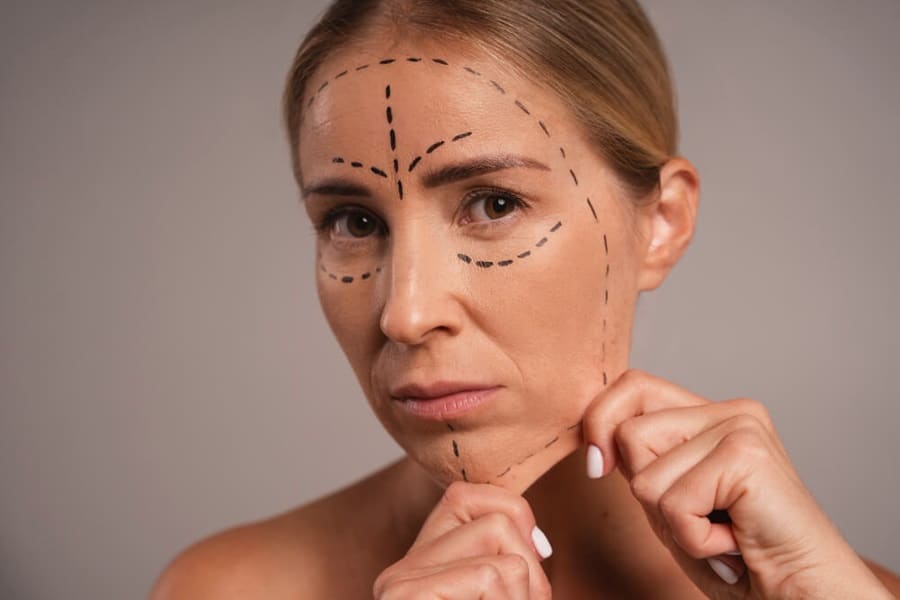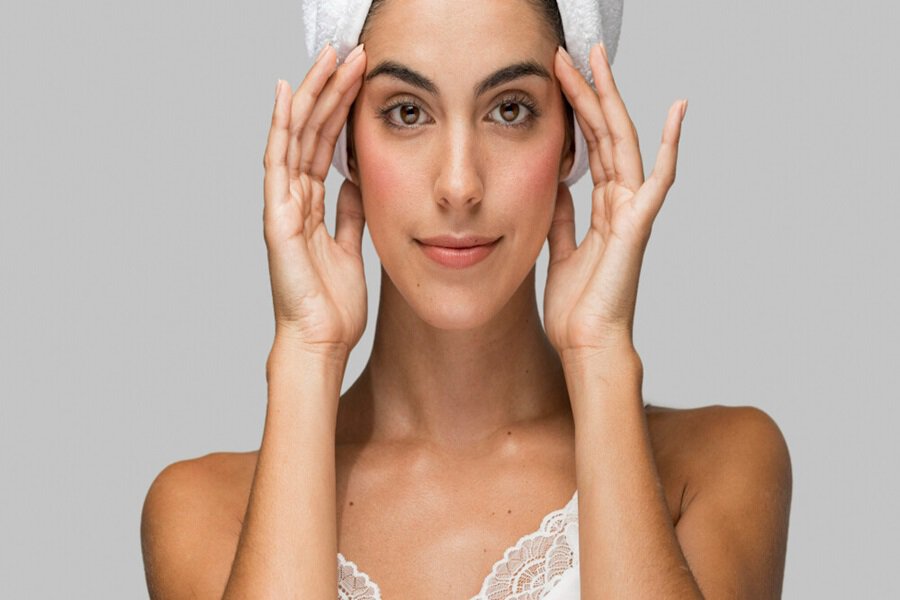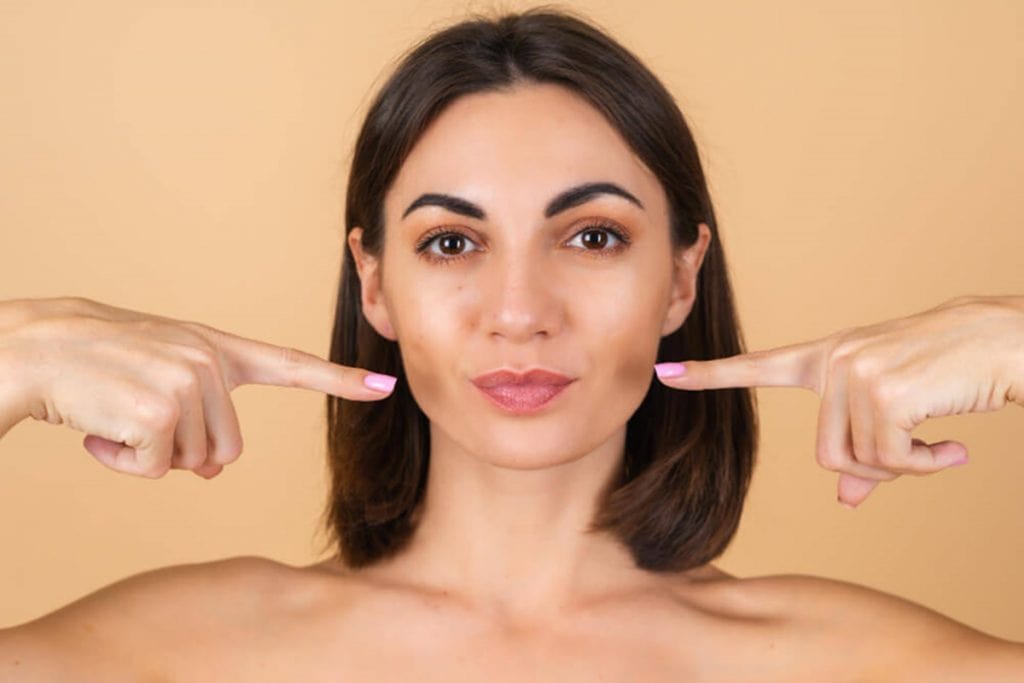How to Contour Face: Professional Guide for Stage Makeup
7th May, 2024
Transform your natural glow with this guide on how to contour your face.
Contouring is a revolutionary makeup technique that sculpts the face, improving the quality of your natural features and defining structure. Knowing how to contour can elevate your makeup game, bringing attention to your best features while subtly concealing others. In this article, you will learn about the essentials of face contouring, from contour placement to finding where to contour for various face shapes.
What Is Contouring

Contouring is a prestigious art form that transforms the face, improving and defining its natural structure through delicate makeup application.
At its core, contouring is about playing with light and shadow to reshape and resize features, creating an illusion of depth and definition. The secret to successful face contouring lies in knowing where to contour. Proper contour placement can elevate the appearance of your cheekbones, slim the face, and give an overall more sculpted appearance.
For the best contouring application, use our tropical contours studio palette.
Balancing Light and Shadow For Contouring
To know how to contour effectively, one must understand the balance of light and shadow. Applying a lighter, illuminating product highlights areas you want to emphasise, making them more prominent.
Furthermore, applying a darker contour shade adds depth, sculpting the face in areas where shadows naturally occur. This technique is crucial for achieving the desired effect without overdoing it, which is essential for faces like the oblong shape, where too much contouring can result in an overly sharp, aged look.
Contouring vs. Bronzing

While both contouring and bronzing adjust the face’s dimension, they serve different purposes. Bronzing adds a warm, sun-kissed radiance using warmer shades, often with a hint of shimmer or a matte finish.
Contouring, however, uses cooler tones to create natural-looking shadows, enhancing the face’s structure with a primarily matte finish.
Preparing Your Skin for Contouring
Efficient face contouring starts with a solid skincare regimen.
Hydrated, happy skin provides the perfect canvas, making makeup application smoother and more effective. Begin with double cleansing to unclog pores and promote a radiant complexion, followed by liquid exfoliation to remove dead skin cells.
Moisturising is next, locking in hydration, with serums applied afterward to address specific concerns like dryness or fine lines. Remember, SPF is a non-negotiable final step in the morning to protect your skin.
Knowing whether to apply primer or moisturiser first is essential knowledge when prepping your skin for contouring.
Cream or Powder Contour
Deciding whether to use a cream or powder contour depends on your experience level and the finish you desire.
Cream contours are ideal for beginners and those seeking a natural, blended look, as they are more forgiving and easier to work with. They blend seamlessly into the skin without accentuating dryness or fine lines.
Powder contours, while offering a more matte finish, require a more practised hand to ensure a flawless blend and avoid a patchy appearance.
How To Contour Your Face

Here’s a step-by-step guide to achieving a sculpted, natural look for your face by using contour.
Step 1: Prime and Set the Base
Begin with a clean canvas by applying moisturiser, followed by primer to smooth out the skin’s texture.
Choose a foundation that matches your skin type and tone, applying it evenly with a beauty blender or brush. This step ensures a flawless base for the contour to adhere to, making it easier to achieve a seamless blend.
Step 2: Define the Forehead
Start contouring your forehead, as this will be pivotal for creating balance in face contouring.
Use a cream contour for easier blending, applying it along the hairline and temples. This technique creates the illusion of a shorter forehead, elevating the natural contours of your face. Use a light hand and build intensity gradually.
Step 3: Sculpt Cheekbones and Jawline
Next, accentuate your cheekbones to give your face a lifted appearance.
Locate the hollows of your cheeks by sucking in your cheeks and apply contour in a diagonal line from the ears towards the mouth, stopping midway.
For the jawline, apply the contour beneath the jaw to create a shadow, developing the natural bone structure by adding definition. Blend thoroughly to avoid any harsh lines, ensuring a natural transition between light and shadow.
Step 4: Contour the Nose (Optional)
For those who want to refine their nose shape, lightly draw two lines along the sides of the nose, blending them out for a subtle definition.
This step is optional but can significantly impact the face’s symmetry. Use a small brush for precision and blend outwards for a natural effect.
Step 5: Highlight and Bronze
Complete your contouring routine by applying highlighter on the high points of your face, like the cheekbones, bridge of the nose, and under the brow bone, to bring forward these areas.
Then, sweep bronzer where the sun naturally hits your face, such as the forehead, cheeks, and chin, to add warmth and a sun-kissed glow. By doing this, you can use contour to create a balanced, radiant look on your face in all environments and surroundings.
Check out our recommendations for choosing the best makeup brushes for any application task.
Tailored Contouring Techniques for Every Face Shape
Understanding your face shape is crucial in mastering face contouring. Here’s how to contour based on different facial structures, ensuring you highlight your best features.
Contouring for an Oblong/Oval Face Shape
Oblong or oval faces are longer than they are wide, often lacking defined angles. To contour an oblong face:
- Apply the contour along the hairline to reduce forehead height, creating an illusion of a shorter face. For cheekbones, contour should start from the ears and taper off midway on the cheeks to enhance facial dimensions.
- Highlighting under the eyes and on the brow bone can bring focus to the centre of the face, balancing the overall length.
Contouring for a Diamond Face Shape
Diamond faces have broad cheekbones with a narrow forehead and jawline.
- Contour below the cheekbones, starting from the ears to the middle of the cheeks, to elevate the face’s natural angles.
- Avoid extending the contour too close to the mouth to maintain the face’s natural harmony.
- Highlight under the eyes and along the forehead and chin to soften the pronounced cheekbones and balance the face’s width.
Contouring for a Heart Face Shape
Heart-shaped faces feature a wider forehead and a narrow chin.
- Contour along the sides of the forehead and temples to minimise the forehead’s width, and apply along the jawline to enhance the chin’s delicate point.
- Highlighting under the eyes and on the forehead and chin helps to balance the face’s upper and lower halves.
Contouring for a Round Face Shape
Round faces are characterised by their width and height being almost the same, with soft angles.
- Contouring around the forehead and temples can elongate the face, while applying contour below the cheekbones from the ears to the cheeks, then down to the jawline, can sculpt and define the face.
- Highlight under the eyes, on the forehead, and chin to add dimension and focus to the centre of the face.
Contouring for a Square/Rectangle Face Shape
Square and rectangle faces have equal face length and width, with a pronounced jawline.
- Contour around the sides of the forehead and temples to soften the face’s edges.
- Apply contour along the hairline to reduce forehead space and below the cheekbones to improve the facial structure.
- Slim the jaw by contouring under the jawbone, and highlight under the eyes, on the forehead, and chin to add a soft glow and create balance.
Can Age Affect How You Contour?
Contouring isn’t just for the young; it’s a technique that can evolve with age, adapting to changes in facial structure due to the natural loss of collagen and elastin. While the face shape remains the guide for where to contour, the method and intensity may vary with age. Older individuals may benefit from subtle contouring to lift and define features, while younger users might opt for more defined contouring. It’s all about improving your natural bone structure and achieving a look that feels right for you, regardless of age.
Contouring Mistakes To Avoid
To avoid common contouring errors, consider these tips:
- Do not use contour products that may appear too dark or warm on your natural skin tone. This can cause it to appear muddy or unnatural.
- Being heavy handed with your contour can lead to harsh lines or streaks to appear.
- The whole face may not need contouring; doing this may lead to an unbalanced appearance.
- Only use clean brushes or sponges for even, seamless contouring to prevent patchiness or inconsistency.
Master How To Contour Face For Amateur or Professional Application
In conclusion, mastering the art of contouring is about understanding your unique face shape and using strategic shadow and light placement to enhance your natural features. Whether you have an oblong, diamond, heart, round, or square face, the right contouring approach can redefine your facial structure, creating balance and highlighting your inherent beauty. Remember, contouring is a versatile skill that adapts with age, proving to be a timeless element in your beauty repertoire.
For more contouring advice, learn how to contour with a self tanner now.
FAQs
How do I make my face look contoured?
In what order do you contour your face?
Do you put foundation on before contouring?
Sources
Katz, A., (2024) How to Contour With Self Tanner for a Youthful, Sculpted Face — No Makeup Needed. Woman’s World [online] Available at: https://www.womansworld.com/posts/beauty/how-to-contour-with-self-tanner [accessed 10/04/24]
Hey there! I’m Isabelle Kerrington, and I’m thrilled to share my passion for the performing arts through my blog. Focusing on theatre makeup, my posts will cover everything from product recommendations to helpful tips and engaging tutorials. Join me on this exciting journey as we explore the magical world of theatre makeup together.
Leave a Reply